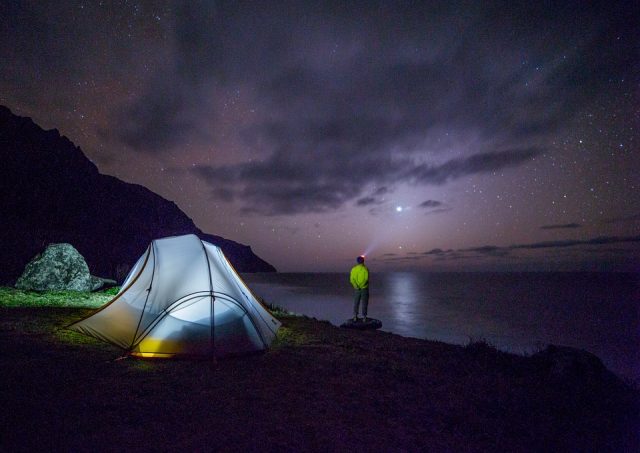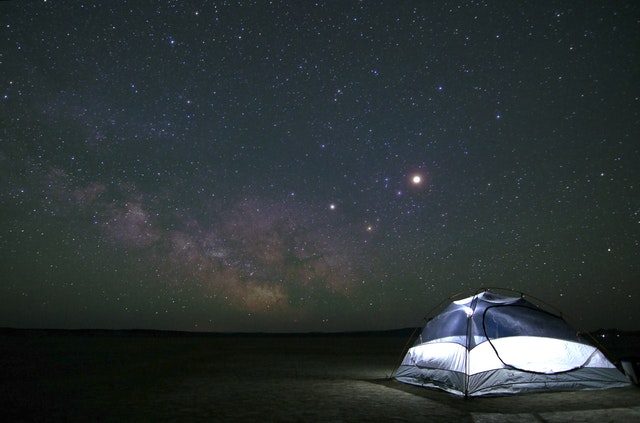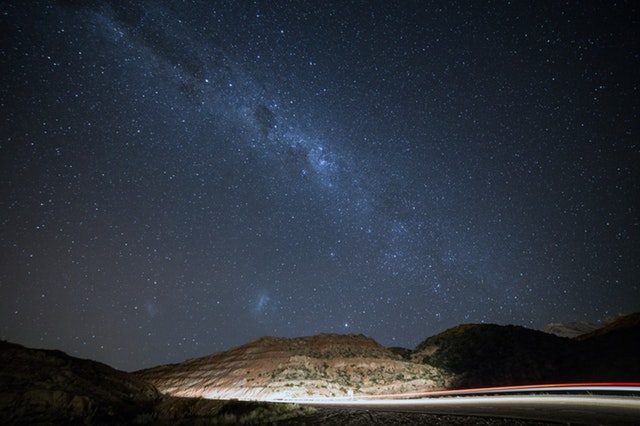Know the stars: Learn to navigate at night
When you are away from city lights, you will be able to see far more stars in the sky than you could otherwise. It is one of the best advantages to camping and hiking at night. But more than that, you can actually navigate your surroundings at night, guided by the stars.
Just as humans have done for thousands of years, long before the creation of GPS, you can find where you are at night by looking up at the night sky. With just a little bit of training, you too can guide yourself the way our ancestors did.

While many people think that it is too hard to learn or perhaps too overwhelming, anyone can learn to navigate using the stars.
The North Star
The easiest way to start navigating the night sky is to locate the North Star. The North Star has always been important for nighttime navigation because it resides right above the North Pole, giving people a constant and reliable direction to move off of when the night is clear.
The North Star is the brightest star in Ursa Minor, the Little Bear constellation. It makes up part of the bear’s tail.
Officially known as Polaris, the North Star can be located by finding the Plough, or the Big Dipper which is part of Ursa Minor. Once you have found this easily recognizable constellation, you can find the pointer stars, Merak and Dubhe, which are the two stars that would be the run off if the Dipper was tipped.
The North Star is five times the distance between the two pointer stars, in the direction that they are pointing away from the Dipper. True North is always directly under Polaris.
The Big Dipper moves counter-clockwise around Polaris, so it will sometimes be upside down or on its side, but where it is in relation to the North Star never changes.
If you know the constellation Cassiopeia, you can locate the North Star that way, since the constellation always is on the opposite side of the North Star than the Big Dipper is.
It is good to recognize Cassiopeia as well in case you cannot find the Big Dipper due to weather conditions. Cassiopeia is a string of five stars that form a sideways ‘W.”

Measuring Latitude
After you have found the North Star, it is important to know that if you are in the Northern Hemisphere, the North Star is going to be the same angle above the horizon as your current latitude. Usually, you won’t have a technical device out with you in the woods to measure, but a rougher estimate can be made using your fist.
Stretch your arm out, with a fist. The outstretched fist can make an angle of about 10 degrees, helping you find your approximate latitude counting by 10 degrees from the horizon by stacking your fists hand-over-hand until you make it to the North Star.
While we are all different shapes and sizes, the general proportions of humans are the same, making finding a rough latitude pretty simple. If you happen to have a sextant tool, you can measure your latitude exactly, but most people will not naturally have such a tool with them when they are navigating unexpectedly at night.
Orion
Orion, the hunter, is also usually an easy constellation to locate. Rising in the east and setting in the west, Orion’s belt is made up of three bright stars that form a straight line, Alnitak, Alnilam, and Mintaka. It is easiest to spot when it is rising and setting in the night sky.
The first star in the belt, Mintaka, rises and sets within one degree of true east and west, no matter where you are located, making it easy to find your sense of direction at the beginning or end of the night. Where Orion is in the sky depends on the season.
He is easily visible in winter and spring in the Northern Hemisphere, but can be seen before sunrise in summer and late at night in the fall.

The constellation looks like a hunter, drawing back his bow, or you could say it looks similar to a bent hourglass. The belt is simple to spot because of how straight the three stars look together in a line, but once you have made out where it is located, the bow, torso, and arm of Orion will come into focus for you.
Finding Direction
If you are not able to surely identify a constellation, but still are looking to figure out where east and west are, you can still use the stars to help figure yourself out.
First you should drive two stakes into the ground, about 36 inches apart. Find a star in the sky that is easy for you to spot and find again. Then you will want to move to where the star is lined up with the top of both of the stakes you have put into the ground.
Then you need to wait to see how and where the star is moving along with the Earth’s rotation. As the Earth rotates from west to east, the stars will look like they are rotating from east to west.
How the star you are watching has moved will tell you which way you are facing.
If your star moved right, you are facing southward If your star moved left, you are facing northward If your star went higher in the sky, you are facing eastward If your star went lower in the sky, you are facing westward
Once you have a general sense of where north is, you should be able to figure out where you came from or where you are going.

While knowing how the rotation of the night sky can help you in a bind, you should always carry a GPS in the woods if possible to give you the extra security you need, especially since rain clouds will make it harder to gauge direction from the sky.
Regardless, try it out at home for fun and see if you can figure out your own latitude and even the direction your house is facing.
If you have any comments then please drop us a message on our Outdoor Revival Facebook page
If you have a good story to tell or blog let us know about it on our FB page, we’re also happy for article or review submissions, we’d love to hear from you.
We live in a beautiful world, get out there and enjoy it.
Outdoor Revival – Reconnecting us all with the Outdoors.





